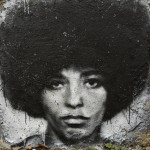There has been quite a bit of hoo-hah recently as some Anglican women are campaigning for the phrase “God the Mother” to be included in the liturgy. In the Pagan movement and much of Judaism, the concept of a female aspect of divinity is uncontroversial. The name YHWH is widely recognised to contain both masculine and feminine elements, and as Jason Mankey points out, the Jewish creation story acknowledges this.
But, as numerous progressive Christians have pointed out, there is a long history of addressing and acknowledging the feminine aspects of their God. There is also a long tradition of misogyny and denial of the feminine in the churches.
![Sophia icon, By Ждан Дементьев, Василий Новгородец. [Public domain], via Wikimedia Commons](https://wp-media.patheos.com/blogs/sites/311/2015/06/Sophia_icon-300x241.jpg)
Would Christianity and Judaism pass the Bechdel test?
The Tanakh (as I prefer to call the “Old Testament”) would pass the Bechdel Test; I am not at all sure that the New Testament would pass it. The Bechdel Test is a way of testing for gender equality in films: it has to have at least two women in it, who talk to each other about something other than a man. In the Tanakh, there are numerous strong female characters (Ruth and Naomi, Esther, Deborah, etc), who do have conversations with each other about something other than a man (at least Ruth and Naomi do, and some of the others may do so as well). There are also mentions of the feminine aspects of their deity: the Shekhinah, the Ruach, and Wisdom (in the Book of Proverbs, and in the Apocrypha). So Judaism passes the Bechdel Test; I am not at all sure that Christianity does.
The Divine Feminine
Mystics of all traditions have honoured the Divine Feminine. Julian of Norwich, the great Christian mystic, referred to God the Mother (in the context of Trinitarian theology):
And thus in our creation God Almighty is our natural father, and God all-wisdom is our natural mother, with the love and goodness of the Holy Spirit. These are all one God, one Lord. In the knitting and joining he is our real, true spouse and we are his loved wife and his fair maiden. …The Second Person of the Trinity is our mother in nature, in our substantial making. In him we are grounded and rooted, and he is our mother by mercy in our sensuality, by taking flesh. Thus our mother, Christ, in whom our parts are kept unseparated, works in us in various ways. For in our mother, Christ, we profit and increase, and in mercy he reforms and restores us, and by virtue of his passion, death, and resurrection joins us to our substance. [http://www.gloriana.nu/mother.htm]
In the Orthodox Church, there is also a long tradition of Sophia, the Divine Wisdom (known as Sapientia in Western Christianity); indeed the great church of Hagia Sophia in Istanbul was dedicated to Her. She is both the Bride of Christ and the feminine aspect of Christ. There is also the very important concept of Holy Silence (Hagia Hesychia). The Orthodox Church makes a distinction between God’s essence and God’s energies. God’s essence has no gender, though the persons of the Trinity are regarded as male, and the energies (Wisdom, Silence, light, and so on) are generally personified as female. The Virgin Mary has the title God-Bearer (Theotokos) in Orthodoxy, and is held in the highest regard in that tradition.
Niki Whiting has written an excellent piece on why the Catholic Church ought properly to regard Mary as co-redemptrix, which would have the added benefit of getting away from substitutionary atonement theology. In Catholicism, Mary is very highly regarded, but she is a Virgin Mother, which is an image which has been very damaging to women by holding out an unattainable ideal and denying the validity of sexual pleasure.
Many liberal Christians regard the Holy Spirit as the feminine aspect of God – again following Jewish tradition, as both the breath of God, Ruach, which is translated in Christian versions of the text as the Holy Spirit, is a feminine noun in Hebrew.
In Judaism, there is the Shekhinah, the Divine Presence, and the Ruach, the Breath of God, both of which are seen as feminine. The Shekhinah is believed to descend on the Sabbath eve at the lighting of the candles (usually done by the lady of the house). The Shekhinah is exiled in the physical world and trying to rejoin the Godhead. We can help reunite them in the process of Tikkun – the exercise of compassion, which helps to heal the rift between the worlds. Also, it is regarded as a holy thing to make love on the Sabbath eve, as this helps to reunite the Shekhinah and the Godhead.
In Islam, there is the Sakina, the peace of God, which descends upon believers, who is mentioned twice in the Quran.
In Paganism, it is probably the existence of priestesses and the influence of feminism that have ensured the equality of women. Also, very importantly, all aspects of womanhood are represented: the maiden, the mother, the warrior, the sexual woman, the crone who is the embodiment of wisdom. However, a certain amount of gender-role-stereotyping is present in Paganism, and perhaps Pagans need to think more about the Divine that transcends gender.
In Unitarianism – the first denomination to have a female minister, Gertrude von Petzold, in 1904 – women are regarded as completely equal to men. Unitarians have also embraced the Divine Feminine to a certain extent, and use inclusive gender-neutral language wherever possible. In the 19th century, the great Unitarian Transcendentalist minister, Theodore Parker, prayed to “God our Father and our Mother”, and also used gender-neutral terms like “Infinite Spirit” and “Infinite Presence”.
“O Father, who adornest the summer and cheerest the winter with thy presence, we thank thee that we know that thou art our Father, and our Mother, that thou foldest in thine arms all the worlds which thou least made, and warmest with thy mother’s breath each mote that peoples the sun’s beams, and blessest every wandering, erring child of man.” (5 February, 1854)
“Creating and Protecting Power, our Father and our Mother, we lift up our psalm of thanksgiving to You. You hold the world in Your arms of love. It sings thanksgiving to You every morning, evening and noon. We praise You for Your blessings. We desire to be deeply conscious of Your presence, which fills all time, which occupies all space. We would know You as You are.” (Our Father and Our Mother)
“Infinite Presence who lives and moves and has Your being in all that is above us and around us and underneath us: we remember that it is in You that we also live and move and have our being. Conscious of Your presence, we would look on our daily lives, that the murmur of our business, the roar of the street and the jar of the noisy world, may mingle in the prayer of our aspiration and hymn of gratitude. May the meditations of our hearts draw us nearer to You, always above us and about us and within.” (Our Daily Lives)
I think Parker’s strategy of mixing various different terms is good: it keeps his audience from ever settling on a specific gender for their deity. And since both Judaism and Christianity affirm that God doesn’t have a gender, this makes a lot of sense.
When I hear the word “God”, I hear it as a masculine noun. When I hear “the Divine”, I hear it as gender-neutral. But it doesn’t explicitly include the Divine Feminine – the Goddess. Of course, for Christians, the concept of the Goddess is immediately redolent of Paganism, which has a very different view of the Divine / deities. So, personally, I am quite happy for there to be a bit of distance between the two traditions: they are quite distinct from each other, and it’s no use pretending that they are not. I am not particularly keen on the idea that “all religions are one” – yes, religious traditions can and should learn from each other, but they are not the same.
So, how does the Goddess differ from traditional views of God?
- In all traditions, she is regarded as immanent in the world, not transcendent.
- She is not just an aspect of a male God, but a being in her own right. (If you want to be monotheist about this, perhaps you could regard Her as an emanation of the Divine source.)
- She is associated with Nature and the wilderness.
- She is often seen as a mother who gives birth to the Universe and who also IS the Universe.
- She is the embodiment of compassion and wisdom.
- She is not interested in imposing laws from on high, but on the emergence of harmony at the grass roots level.
- She is much more than a Virgin Mother – she is also the wise crone, the wild maiden, the sexual woman.
- Her worship includes sacred sexuality.
Because she is Mother Nature, she is not always sweet and kind; sometimes she is the terrible mother, dealing death mercifully. In Paganism, death is regarded as a natural part of the cycle of birth, life, death and rebirth (in contrast to much of Christianity, which regards it as a result of the Fall).
I think it is important, in honouring female images of the divine, not to start gender stereotyping, and assuming that some qualities are inherently masculine, and others inherently feminine. This is clearly not true. But rather than always using masculine and gender-neutral language to describe the divine, it would be great to use feminine language sometimes too, however you regard the Divine.
As Maud Robinson, a Unitarian minister, writes:
God does not have a gender and although we can readily accept that intellectually, we should be aware that many of us have a deep history of the use of male-centred language in prayer and that it is embedded in our collective psyche. The word God, in itself, causes me problems, it is a word, which despite our modern sophistication and political correctness can’t but conjure up images of a male godhead for many of us. How can we escape from these deeply ingrained images of a male godhead?
I think the answer to her question is to look at images of the Divine Feminine in your own religion. There are numerous books and websites devoted to Her.
I think it would be intellectually dishonest to pretend that all religions are one, and for Christians to start stealing the clothes of Paganism. But there are plenty of images and descriptions of the Divine Feminine in the Christian tradition that they can use to get in touch with the feminine aspects of their God.
There are plenty of female images of deity in the Christian tradition, especially in Orthodox Christianity, and would-be reformers of the liturgy would do well to research them. There are also many prayers addressed to God the Mother (especially in the Unitarian tradition), inclusive liturgy, and gender-neutral liturgy.
















